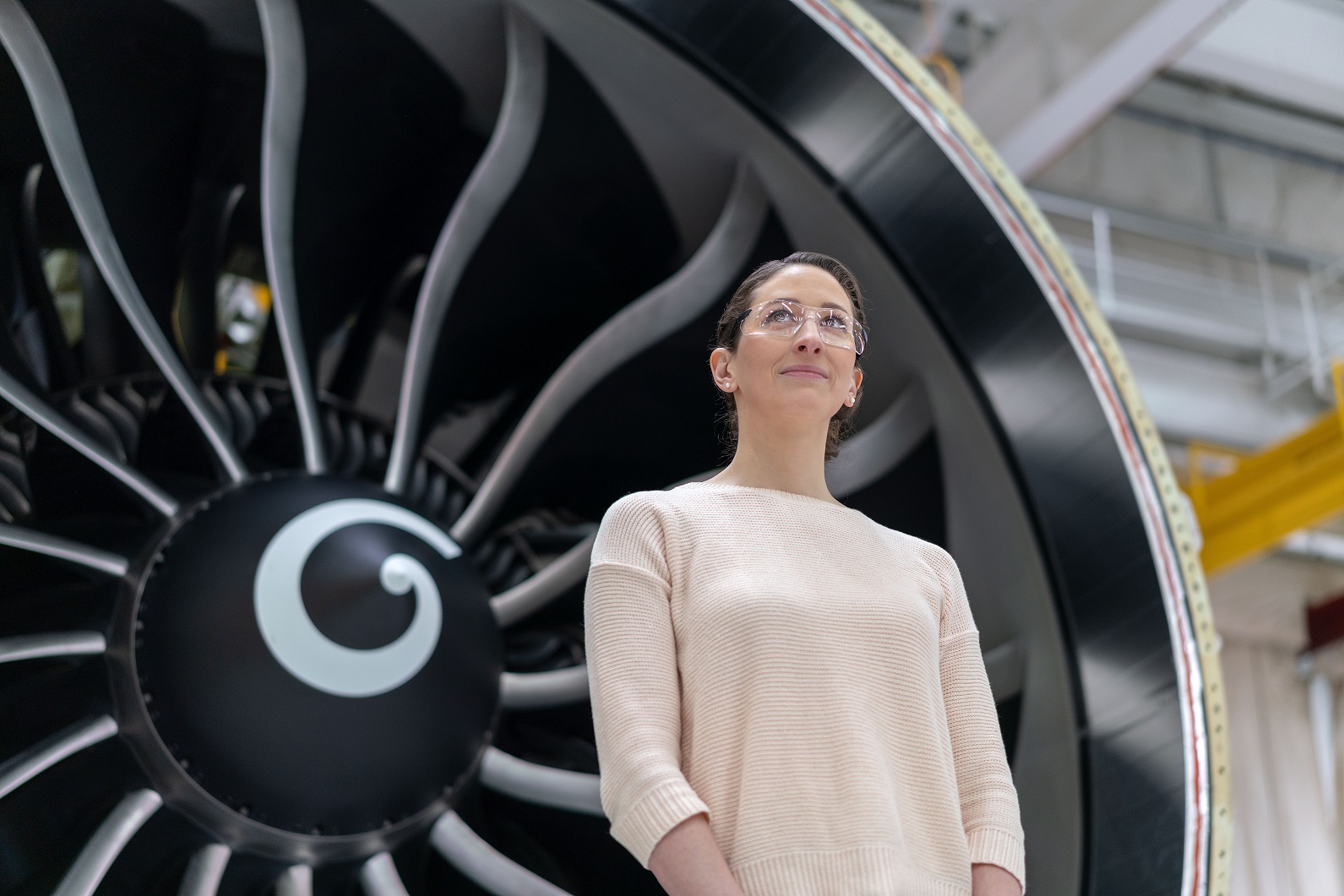Air Transport Action Group today announced strengthened climate commitment
- GE Aviation CEO joins other industry leaders in signing declaration
- GE Aviation advancing open fan engine technologies, hybrid electric and Sustainable Aviation Fuel research to meet industry goals
EVENDALE, OH; October 6, 2021: Members of Air Transport Action Group (ATAG), including GE Aviation, have adopted a long-term climate goal of net-zero carbon emissions by 2050, confirming the aviation industry’s commitment to reduce carbon emissions in support of the Paris Agreement 1.5ºC goal. This follows an earlier industry goal set in 2009.
Meeting the long-term net-zero goal requires the industry to come together to deploy revolutionary technologies to reduce emissions and to advocate for increased use and availability of alternative fuels, such as Sustainable Aviation Fuel (SAF) and hydrogen.
“GE Aviation is advancing bold technology solutions including open fan, hybrid electric, and new engine core designs to reduce the environmental impact of flight. By joining forces with the broader aviation industry toward the same 2050 net-zero carbon emissions commitment, we can realize these impacts for the flying public quicker than one company can alone,” said John S. Slattery, president and CEO of GE Aviation.
To address this challenge, GE Aviation has embarked on multiple engine technology demonstrators to accelerate emissions-lowering technologies for aircraft propulsion. Two recently announced examples include the CFM RISE* (Revolutionary Innovation for Sustainable Engines) Program in partnership with Safran and the Electric Powertrain Flight Demonstration project with NASA. Additionally, GE has been actively involved in assessing and qualifying SAF since 2007 and works closely with SAF producers, regulators, and operators to ensure that SAF can be widely adopted for use in aviation.
In the ATAG declaration, the industry says that a mix of new technology – including potentially shifting to electricity and hydrogen for some shorter services, improvements in operations and infrastructure, and a transition to SAF by mid-century would provide a majority of the carbon reductions. Remaining emissions would be captured using carbon removal measures.
“Aviation has increased its ambition in line with the need for all sectors of the economy to pursue rigorous climate action. Despite having endured the greatest crisis in aviation history, this new agreement shows that our sector has placed climate action as one of its highest priorities. It will be a significant challenge to meet net-zero carbon emissions by 2050, but the evidence shows that with the right support from governments and efforts across the value chain, especially the energy industry, it is achievable,” said Haldane Dodd, acting executive director of ATAG.
GE recently announced its ambition to be a net zero company by 2050, including the Scope 3 emissions from the use of sold products. This followed GE’s previous commitment to be carbon neutral by 2030 in its own facilities and operations, including Scope 1 and Scope 2 emissions.
GE technology investments
GE Aviation has recently announced a series of technology investments, which will help achieve the company’s and the industry’s climate goals.
Partnering with the U.S. National Aeronautics and Space Administration (NASA), GE Aviation announced October 1 it has launched a program to mature an integrated megawatt class hybrid electric powertrain. This will demonstrate flight readiness of a hybrid electric propulsion system for single-aisle aircraft, with ground and flight tests taking place by the mid-2020s.
The U.S. Federal Aviation Administration (FAA) also announced in September 2021 that GE Aviation has received its third Continuous Lower Energy, Emissions and Noise (CLEEN) award since 2010. Funding helps support development of GE’s open fan, electrification, acoustics and other technologies, as well as ongoing research into alternative jet fuels such as SAF.
In June 2021, GE Aviation and Safran launched the CFM RISE Program targeting more than 20 percent lower fuel consumption and CO2 emissions compared to today’s most efficient engines.
In Europe, GE’s Italian entity, Avio Aero, has contributed to the development and testing of open fan engine architectures by supporting Europe’s Clean Sky research program.
*RISE is a registered trademark of CFM International, a 50-50 joint company between GE and Safran Aircraft Engines.
ENDS
Notes to Editor
About GE Aviation
GE Aviation, an operating unit of GE (NYSE: GE), is a world-leading provider of jet engines, components and systems for commercial and military aircraft. GE Aviation has a global service network to support these offerings. For more information, visit us at www.GEAviation.com. Follow GE Aviation on Twitter, YouTube, LinkedIn and Instagram.
GE Aviation is committed to a more sustainable future of flight. Learn more here.
For more information:
Kirsten Kutz Kelly Home | Nivine William
Communications Director, MENA ASDA’A BCW
GE International Markets kelly.home@bcw-global.com
kirsten.kutz@ge.com nivine.william@bcw-global.com
















